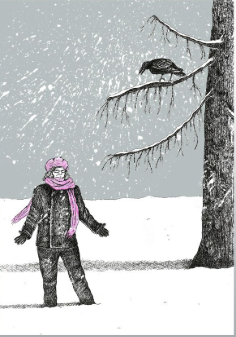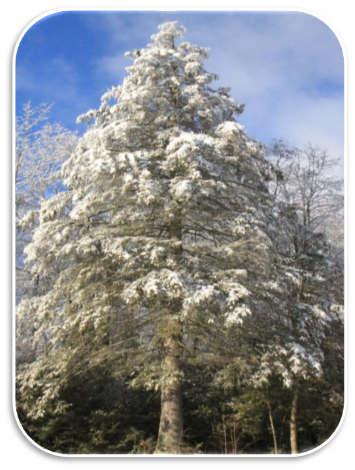Class X -Poem - 1 (First Flight) "Dust of Snow By Robert Frost"
Dust of Snow
By Robert Frost
Dust of Snow Introduction
The poem “Dust of Snow” by Robert Frost is a simple and short poem, yet with a deeper and larger meaning. The poet explains how an act as petty as experiencing snow on one’s body can brighten one’s day up. The message of the poem is put into words by Robert Frost:
Summary
Dust of Snow Poem and Explanation

Word meanings
Shook- shake
Hemlock- a poisonous tree with small white flowers

Explanation -The poem is set in a scene where the poet is in a bad mood and is walking by a tree, a hemlock tree. Hemlock tree is a poisonous tree. As he passes by, a crow happens to throw some snow dust on him. Whether it falls on his head or shoulders is unknown as there is no specific mention in the poem. Also, the readers are left in doubt about the bird’s specific action. Whether the crow was landing, shivering with cold, re adjusting itself on the branch or taking off, it happened to send some particles of snow upon the author. Here, the two agents of nature, the hemlock tree and the crow are signifiers of sadness and gloom just like the poet’s mood was in the opening scene.
Rued- held in regret
Dust of Snow Literary Devices
- Rhyme Scheme- abab cdcd
- Alliteration- the occurrence of the same letter or sound at the beginning of adjacent or closely connected words.
- Has given my heart
- And saved some part
- inversion - when the structure of a sentence is changed by the poet to create rhyme, this poetic license is called inversion. In stanza 1, inversion can be seen.
- assonance - the prominence of a vowel sound throughout a line is called assonance. In stanza 1, line 2 - “Shook down on me” - ‘o’ sound is prominent.
- enjambment - when the same sentence continues to the next line without the use of any punctuation marks, it is called enjambment. It has been used throughout the poem.
The instances of alliteration are as follows-
Q1. What is a “dust of snow”? What does the poet say has changed his mood? How has the poet’s mood changed?
A. “Dust of snow” refers to the tiny particles of snow. The particles are so small that poet referred to them as “dust”. The poet was in an awful mood when particles of snow had fallen on him. This changed the poet’s frame of mind instantly and his day got a lot better.
(i) What are the birds that are usually named in poems? Do you think a crow is often mentioned in poems? What images come to your mind when you think of a crow?
A. Birds like sparrow, nightingale and peacock are more than often named in poems. Unlike these birds, crows are often seen as the indicators of doom and fear. They are often used for negative references.
A. Trees are also seen as mighty creatures imparting wisdom as they’re too old. They give out oxygen and absorb the carbon dioxide which is connected with absorbing all the negative energy. But there are trees that are poisonous too, like a hemlock tree. The poet does not mention a more ‘beautiful’ tree such as maple, oak or pine because he wants to indicate a sad scene. Being poisonous, a hemlock tree is considered bad and so, he refers to it.
A. Both crow and the hemlock tree represent sorrow. Frost has used both the negative creatures (crow and the hemlock tree) as the carriers of positivism and strength that transformed his day for the better. By not using birds like sparrow and nightingale and trees like maple, oak or a pine, the poet has tried to break down all the preconceived notions we have about certain agents of nature. He has tried to make us understand that we see the world not as how it is, but as how we want to see it. Thus, the crow sitting and a hemlock tree together made his day better. The dust of snow stands for joy.

Comments
Post a Comment